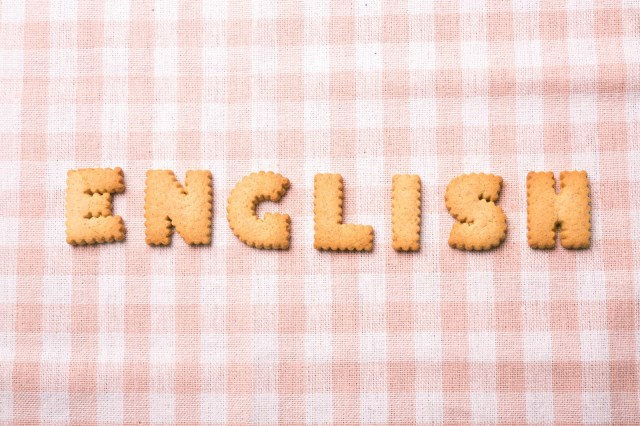
Japanese rules for writing your ABCs are surprisingly strict.
In Japanese writing, the order in which you write your characters is very important. Whether you’re learning the basic hiragana or the more complex kanji, correct stroke order is crucial; free styling is not an option.
I, however, only started learning Japanese when I was well out of elementary school, and so I write my Japanese with reckless abandon. As a result I have often been told, no matter how beautiful my finished product may be, “Hey, your stroke order is all wrong.”
So Japanese characters have a definitive stroke order, but what about the English alphabet? Is there a certain way that the letters have to be written? You might be inclined to say “of course not!” Take the letter “X” for example, and the viral post from last year about how many different and valid ways there are to write it.
▼ Where are my fellow 7s at?
Also this is so interesting to me - which way do you draw an X? Colored line being the first stroke pic.twitter.com/a0WTl8WT7P
— sixers smasey (@SMASEY) January 20, 2019
You might conclude that, as long as the letter is able to be read, it doesn’t really matter how to write it or what it looks like. However, this way of thinking might not get you very far in a Japanese classroom.
English teacher Hitomi Igarashi shared what she has learned to be the “correct Japanese way to write the alphabet” on her blog back in 2018, and it might surprise you.
Despite the roman alphabet not being native to Japan, there is a specific order and way to write every single letter. For students learning English at schools in Japan, should they choose to write the alphabet in a different way, they would likely be marked as incorrect, depending on the teacher.
So how well would you fare in a Japanese English class? See how far you can go with the following questions:
▼ First up is capital A. Which one of these most resembles your A?
If you answered 2, sorry! You’ve fallen at the first hurdle! The answer is 1. Keep your middle line nice and low.
▼ Next, how do you write your O? Where do you start writing it from?
The answer is 2! Hitomi added that you should write your O counter-clockwise.
▼ Here’s the next question: G.
The correct answer here is 3. According to Hitomi, a student lost a point on an otherwise perfect test due to their G not being up to standard.
▼ Are you still in the race? How about this one: lowercase a.
While I myself am definitely a 1 in this case, according to Hitomi-sensei and English teachers throughout Japan, the correct way is 2. The line in the a should be nice and straight.
▼ If you’ve made it this far, here’s your last challenge! How do you write a lowercase k?
Are you ready for the answer?
…
…
…
The answer is 2.
While Hitomi’s blog post was originally made back in 2018, it has only recently been making the rounds online. Japanese netizens were frustrated at the seemingly strict system that Japanese schools have when teaching ABCs, and a lot of them were Japanese people who had experience studying abroad.
“I graduated from an American high school and nobody cares about how to write. We are learning English for communication. Surely the focus should be on how to communicate with others and convey our feelings, especially for elementary school students.”
“I’d practiced the Japanese way of writing a lot, but I ended up being teased in my American school for the way I wrote my ABCs.”
“I went to university in the U.S., wrote my ABCs in my own way, and passed all my tests, lol!”
“The native English speaker at my school told me ‘There’s no stroke order! Write it how you want!'”
“Is it April 1st already? This is a joke, right?”
“I studied in the U.S. and I was told the ‘Japanese’ way of writing ‘k’ is wrong!”
Hitomi did conclude her blog post with this: “Honestly, any way you choose to write your alphabet is fine, as long as other people can read it. The only time that it’ll be a real issue is on the junior high school tests. Especially for younger students, it’s better to get it ‘right’ while they are still young, so they don’t lose any marks on their tests in the future.”
What do you think, readers? Should there be a uniform way for us to write the alphabet? And would you be able to get 100 points on a Japanese English test? Let us know in the comments!
Source: Twitter@JoJoJishoBruce, えいごハウス aplus via Kinisoku
Top image: Pakutaso
Insert images: ©SoraNews24
● Want to hear about SoraNews24’s latest articles as soon as they’re published? Follow us on Facebook and Twitter!

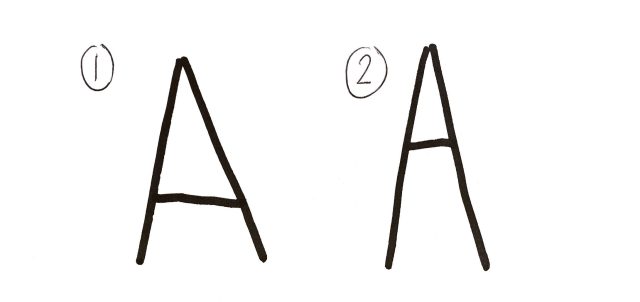
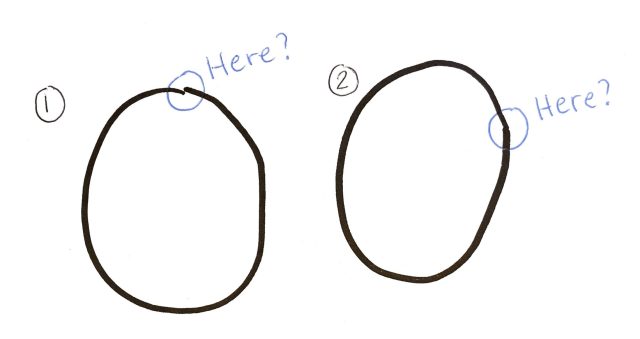
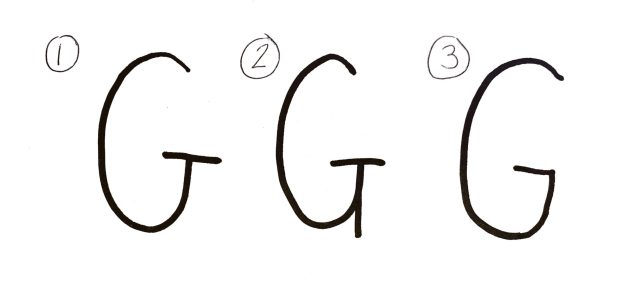

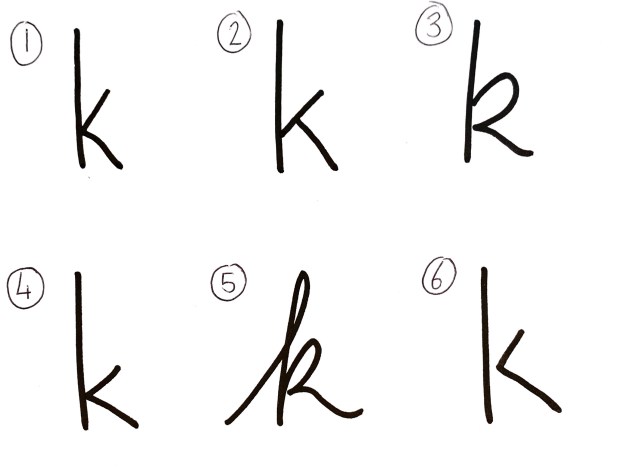
 Japanese first grader wins math contest by quantifying “which hiragana are the hardest to write”
Japanese first grader wins math contest by quantifying “which hiragana are the hardest to write” Struggling with Japanese? Let Tako lend you a hand…or five
Struggling with Japanese? Let Tako lend you a hand…or five Tired of wasting paper practicing your kanji? Try these reusable water-activated practice sheets
Tired of wasting paper practicing your kanji? Try these reusable water-activated practice sheets “A dead bug” and other amusing, adorable, snarky, and downright ridiculous test responses
“A dead bug” and other amusing, adorable, snarky, and downright ridiculous test responses “We wasted so much time in English class” — Japanese Twitter user points out major teaching flaw
“We wasted so much time in English class” — Japanese Twitter user points out major teaching flaw McDonald’s new Happy Meals offer up cute and practical Sanrio lifestyle goods
McDonald’s new Happy Meals offer up cute and practical Sanrio lifestyle goods Studio Ghibli glasses cases let anime characters keep an eye on your spectacles
Studio Ghibli glasses cases let anime characters keep an eye on your spectacles All-you-can-drink Starbucks and amazing views part of Tokyo’s new 170 meter-high sky lounge
All-you-can-drink Starbucks and amazing views part of Tokyo’s new 170 meter-high sky lounge Super Nintendo World expansion gets delayed for several months at Universal Studios Japan
Super Nintendo World expansion gets delayed for several months at Universal Studios Japan Kyoto’s 100 Demons yokai monster parade returns!
Kyoto’s 100 Demons yokai monster parade returns! Beautiful Sailor Moon manhole cover coasters being given out for free by Tokyo tourist center
Beautiful Sailor Moon manhole cover coasters being given out for free by Tokyo tourist center Studio Ghibli’s Nausicaa of the Valley of the Wind becomes wristwatch of Seiko【Photos】
Studio Ghibli’s Nausicaa of the Valley of the Wind becomes wristwatch of Seiko【Photos】 We try out “Chan Ramen”, an underground type of ramen popular in the ramen community
We try out “Chan Ramen”, an underground type of ramen popular in the ramen community More foreign tourists than ever before in history visited Japan last month
More foreign tourists than ever before in history visited Japan last month Dogs now allowed on Catbus! Ghibli Park vehicles revise service animal policy
Dogs now allowed on Catbus! Ghibli Park vehicles revise service animal policy Disney princesses get official manga makeovers for Manga Princess Cafe opening in Tokyo
Disney princesses get official manga makeovers for Manga Princess Cafe opening in Tokyo Starbucks reopens at Shibuya Scramble Crossing with new look and design concept
Starbucks reopens at Shibuya Scramble Crossing with new look and design concept Beautiful new Final Fantasy T-shirt collection on the way from Uniqlo【Photos】
Beautiful new Final Fantasy T-shirt collection on the way from Uniqlo【Photos】 Is the new Shinkansen Train Desk ticket worth it?
Is the new Shinkansen Train Desk ticket worth it? Foreign English teachers in Japan pick their favorite Japanese-language phrases【Survey】
Foreign English teachers in Japan pick their favorite Japanese-language phrases【Survey】 Japanese convenience store packs a whole bento into an onigiri rice ball
Japanese convenience store packs a whole bento into an onigiri rice ball Studio Ghibli releases Kiki’s Delivery Service chocolate cake pouches in Japan
Studio Ghibli releases Kiki’s Delivery Service chocolate cake pouches in Japan Japan’s bone-breaking and record-breaking roller coaster is permanently shutting down
Japan’s bone-breaking and record-breaking roller coaster is permanently shutting down New definition of “Japanese whiskey” goes into effect to prevent fakes from fooling overseas buyers
New definition of “Japanese whiskey” goes into effect to prevent fakes from fooling overseas buyers Our Japanese reporter visits Costco in the U.S., finds super American and very Japanese things
Our Japanese reporter visits Costco in the U.S., finds super American and very Japanese things Studio Ghibli unveils Mother’s Day gift set that captures the love in My Neighbour Totoro
Studio Ghibli unveils Mother’s Day gift set that captures the love in My Neighbour Totoro Foreign passenger shoves conductor on one of the last full runs for Japan’s Thunderbird train
Foreign passenger shoves conductor on one of the last full runs for Japan’s Thunderbird train Domino’s Japan now sells…pizza ears?
Domino’s Japan now sells…pizza ears? New Japanese KitKat flavour stars Sanrio characters, including Hello Kitty
New Japanese KitKat flavour stars Sanrio characters, including Hello Kitty Kyoto creates new for-tourist buses to address overtourism with higher prices, faster rides
Kyoto creates new for-tourist buses to address overtourism with higher prices, faster rides Sales of Japan’s most convenient train ticket/shopping payment cards suspended indefinitely
Sales of Japan’s most convenient train ticket/shopping payment cards suspended indefinitely Sold-out Studio Ghibli desktop humidifiers are back so Totoro can help you through the dry season
Sold-out Studio Ghibli desktop humidifiers are back so Totoro can help you through the dry season Japanese government to make first change to romanization spelling rules since the 1950s
Japanese government to make first change to romanization spelling rules since the 1950s Ghibli founders Toshio Suzuki and Hayao Miyazaki contribute to Japanese whisky Totoro label design
Ghibli founders Toshio Suzuki and Hayao Miyazaki contribute to Japanese whisky Totoro label design Doraemon found buried at sea as scene from 1993 anime becomes real life【Photos】
Doraemon found buried at sea as scene from 1993 anime becomes real life【Photos】 Tokyo’s most famous Starbucks is closed
Tokyo’s most famous Starbucks is closed One Piece characters’ nationalities revealed, but fans have mixed opinions
One Piece characters’ nationalities revealed, but fans have mixed opinions We asked a Uniqlo employee what four things we should buy and their suggestions didn’t disappoint
We asked a Uniqlo employee what four things we should buy and their suggestions didn’t disappoint Princesses, fruits, and blacksmiths: Study reveals the 30 most unusual family names in Japan
Princesses, fruits, and blacksmiths: Study reveals the 30 most unusual family names in Japan To handwrite, or not to handwrite? Recruiter lays into ‘laziness’ of young Japanese job hunters
To handwrite, or not to handwrite? Recruiter lays into ‘laziness’ of young Japanese job hunters Uncle and netizens confused about child’s low grade on math assignment
Uncle and netizens confused about child’s low grade on math assignment Student penalized for writing the number “4” the “wrong” way on worksheet
Student penalized for writing the number “4” the “wrong” way on worksheet What’s wrong with English education in Japan? Pull up a chair…
What’s wrong with English education in Japan? Pull up a chair… Got a question for Haruki Murakami? Website lets you ask the author directly, and in English, too
Got a question for Haruki Murakami? Website lets you ask the author directly, and in English, too Japanese government tells teachers not to be so strict, at least about some kanji radicals
Japanese government tells teachers not to be so strict, at least about some kanji radicals Japanese elementary school kid says 12 x 25 = 300, teacher doesn’t say he’s answered correctly
Japanese elementary school kid says 12 x 25 = 300, teacher doesn’t say he’s answered correctly English conversation school in Japan has clever reminder that students don’t have to be perfect
English conversation school in Japan has clever reminder that students don’t have to be perfect Japanese teacher’s explanation about “individuality” to kids has a deep, beautiful meaning
Japanese teacher’s explanation about “individuality” to kids has a deep, beautiful meaning The science behind why English speakers can’t pronounce the Japanese “fu”
The science behind why English speakers can’t pronounce the Japanese “fu” Japanese girl can’t think of anything to write about for in-class essay, writes awesome one anyway
Japanese girl can’t think of anything to write about for in-class essay, writes awesome one anyway Japanese writing system gets turned into handsome anime men with Hiragana Boys video game
Japanese writing system gets turned into handsome anime men with Hiragana Boys video game Yahoo! Japan finds most alphabetic and katakana words Japanese people want to find out about
Yahoo! Japan finds most alphabetic and katakana words Japanese people want to find out about Renowned Japanese calligraphy teacher ranks the top 10 kanji that foreigners like
Renowned Japanese calligraphy teacher ranks the top 10 kanji that foreigners like Over half of Japanese students in nationwide test score zero percent in English speaking section
Over half of Japanese students in nationwide test score zero percent in English speaking section Japanese high school teacher’s scathing, two-foot-long note to students is nothing short of epic
Japanese high school teacher’s scathing, two-foot-long note to students is nothing short of epic
Leave a Reply